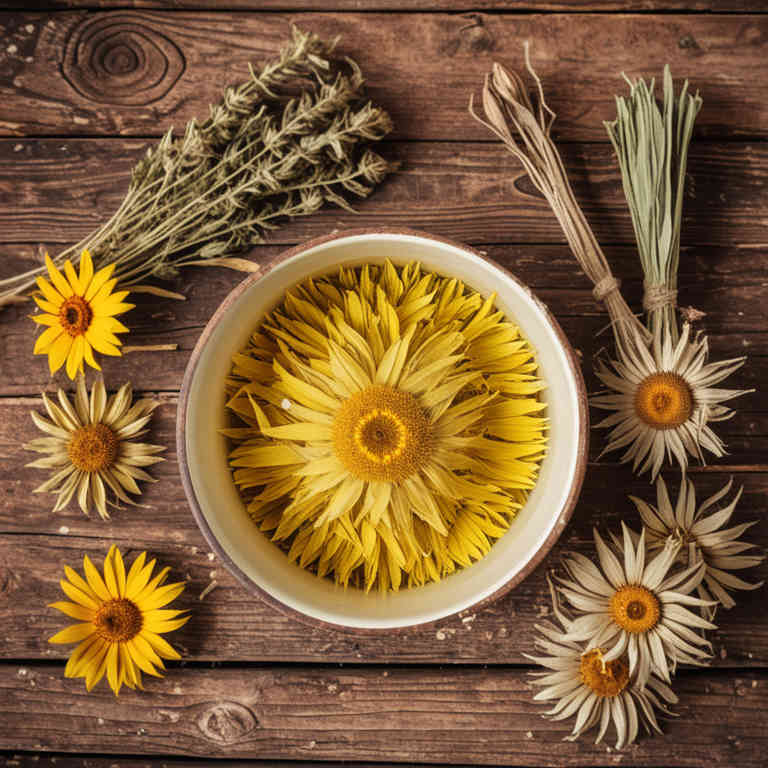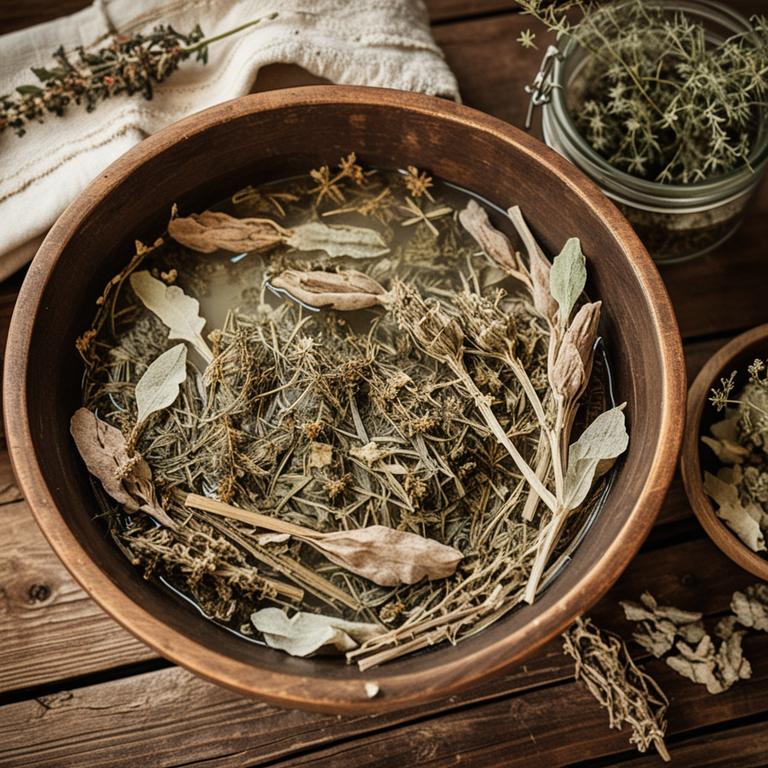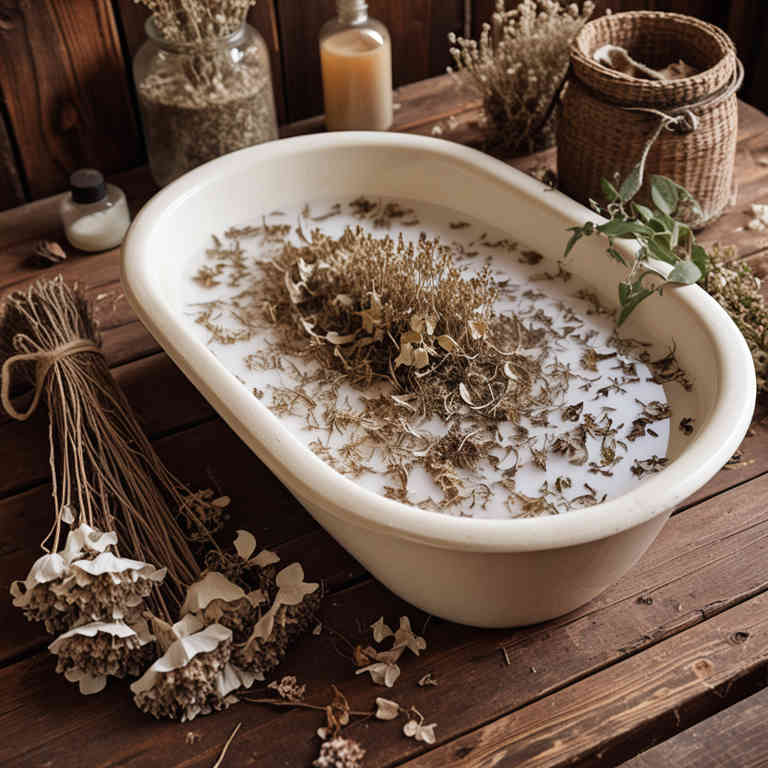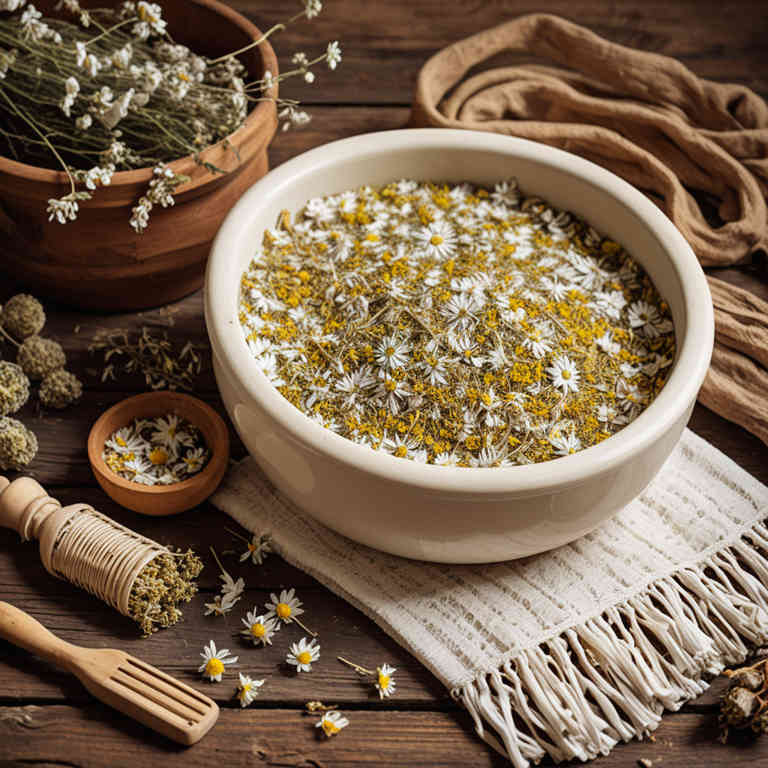10 Best Herbal Baths For Knee Pain

Herbal baths can be a soothing and natural remedy for knee pain, offering relief through the application of specific herbs known for their anti-inflammatory and analgesic properties.
Common herbs used in these baths include lavender, eucalyptus, and turmeric, which can help reduce swelling and ease discomfort. To prepare an herbal bath, simply steep the chosen herbs in hot water and allow the mixture to cool slightly before soaking the affected knee for 15 to 30 minutes. This practice not only provides physical relief but also promotes relaxation and may improve circulation to the area.
While herbal baths are generally safe, it is advisable to consult a healthcare professional before use, especially if the knee pain is severe or persistent.
FREE Herb Drying Checklist
How to make sure every batch retains maximum flavor, color, and aroma without the risk of mold or over-drying. Eliminate guesswork and trial-and-error, making herb drying faster, easier, and more efficient every time.
Table of Contents
1. Hypericum perforatum

Hypericum perforatum, commonly known as St. John's Wort, has been traditionally used in herbal baths to alleviate knee pain by promoting circulation and reducing inflammation.
When infused into warm water, the active compounds in hypericum, such as hyperforin and hypericin, may help soothe joint discomfort and ease muscle tension around the knee. These baths are often recommended as a complementary therapy for individuals seeking natural relief from arthritis or sports-related injuries. To prepare the bath, a handful of dried St. John's Wort can be steeped in boiling water for several hours before being strained and added to warm bathwater.
While generally safe, it is important to consult with a healthcare provider before using St. John's Wort, especially if taking other medications, due to potential interactions.
2. Equisetum arvense

Equisetum arvense, commonly known as field horsetail, has been traditionally used in herbal baths to alleviate knee pain due to its high concentration of silica and other minerals that may support joint health.
When infused into warm water, the bath can help reduce inflammation and improve circulation around the affected area, promoting natural healing. The silica content in equisetum arvense is believed to strengthen connective tissues, potentially offering relief for conditions like arthritis or degenerative joint disease. To prepare the bath, a handful of dried horsetail is boiled and then added to warm water, allowing the beneficial compounds to infuse into the liquid.
While generally considered safe, it is advisable to consult a healthcare professional before using equisetum arvense, especially for individuals with kidney issues or those taking certain medications.
3. Urtica dioica

Urtica dioica, commonly known as stinging nettle, has been traditionally used in herbal baths to alleviate knee pain due to its anti-inflammatory and analgesic properties.
When prepared as a bath, the leaves of Urtica dioica can help reduce swelling and discomfort associated with conditions like arthritis or joint inflammation. The process involves steeping fresh or dried nettle leaves in hot water and then soaking the affected knee for 15 to 30 minutes. This natural remedy is believed to improve circulation and ease muscle tension around the knee joint.
While generally safe, it is advisable to perform a patch test and consult a healthcare professional before using nettle baths, especially for those with sensitive skin or existing medical conditions.
4. Arnica montana

Arnica montana herbal baths have gained popularity as a natural remedy for alleviating knee pain, particularly in conditions like arthritis or sports injuries.
The active compounds in Arnica, such as helenalin and flavonoids, are believed to have anti-inflammatory and analgesic properties that help reduce swelling and pain when absorbed through the skin. To prepare an Arnica bath, a few drops of Arnica essential oil or a commercially prepared herbal bath solution are added to warm water, and the affected area is soaked for 15 to 20 minutes. Many people report improved mobility and reduced discomfort after regular use, though it is important to dilute the oil properly to avoid skin irritation.
While generally considered safe for topical use, individuals with sensitive skin or allergies should consult a healthcare professional before trying Arnica baths.
5. Cnicus benedictus

Cnicus benedictus, commonly known as St. Benedict's weed, has been traditionally used in herbal baths to alleviate knee pain due to its anti-inflammatory and analgesic properties.
When infused into warm water, the essential oils and bioactive compounds of this plant can penetrate the skin, reducing swelling and discomfort in the knee joints. These baths are often recommended as a complementary therapy for individuals suffering from arthritis or sports-related injuries. The soothing effect of the herbal bath helps improve circulation and relax tense muscles around the knee.
Regular use of Cnicus benedictus baths may contribute to long-term relief and enhanced mobility in affected joints.
6. Salvia officinalis

Salvia officinalis, commonly known as sage, has been traditionally used in herbal baths to alleviate knee pain due to its anti-inflammatory and analgesic properties.
When infused into warm water, sage can help soothe inflamed joints and reduce discomfort associated with conditions like arthritis. The essential oils and phytochemicals in sage promote circulation and may help ease stiffness and swelling in the knees. A typical sage bath involves soaking the affected area in the infused water for 15 to 20 minutes, several times a week.
While herbal baths can provide relief, they should be used in conjunction with other treatments and under the guidance of a healthcare professional for optimal results.
7. Symphytum officinale

Symphytum officinale, commonly known as comfrey, has been traditionally used in herbal baths to alleviate knee pain due to its anti-inflammatory and tissue-regenerating properties.
When applied topically through a warm herbal bath, the compounds in comfrey, such as allantoin and rosmarinic acid, may help reduce swelling and promote the healing of damaged tissues in the knee joint. However, it is important to note that comfrey contains pyrrolizidine alkaloids, which can be toxic to the liver if used internally or for prolonged periods, making it safer for external use in baths. For best results, a comfrey herbal bath should be prepared by steeping the dried herb in hot water and then applying the warm solution to the affected area.
While some individuals report relief from knee pain using comfrey baths, it is advisable to consult a healthcare professional before incorporating this remedy into a treatment plan.
8. Chamomilla recutita

Chamomilla recutita, commonly known as German chamomile, has been traditionally used for its soothing and anti-inflammatory properties, making it a popular choice for herbal baths aimed at alleviating knee pain.
When infused into warm water, chamomile releases compounds like bisabolol and alpha-bisabolol, which can help reduce inflammation and soothe irritated tissues. A chamomile herbal bath can provide relief by promoting relaxation and improving blood circulation to the affected area. This natural remedy is especially beneficial for individuals seeking a non-pharmacological approach to managing chronic knee pain.
However, it is advisable to consult with a healthcare professional before using chamomile baths, particularly if you have allergies or underlying health conditions.
9. Achillea millefolium

Achillea millefolium, commonly known as yarrow, has been traditionally used in herbal baths to alleviate symptoms of knee pain.
When infused into warm water, yarrow's anti-inflammatory and astringent properties may help reduce swelling and irritation in the knee joints. The essential oils and tannins present in yarrow can soothe muscle tension and improve circulation, promoting faster recovery from injuries or chronic conditions. To prepare an herbal bath, steep dried yarrow flowers in hot water for several hours, then add the liquid to a warm bath and soak for 15 to 20 minutes.
While herbal baths can be a natural complement to other treatments, it is advisable to consult a healthcare professional before using them for persistent or severe knee pain.
10. Paeonia suffruticosa

Paeonia suffruticosa, commonly known as tree peony, has been traditionally used in herbal baths to alleviate knee pain due to its anti-inflammatory and analgesic properties.
When infused into warm water, the essential oils and compounds from the plant can be absorbed through the skin, providing localized relief and reducing swelling in the knee joints. This natural remedy is often favored for its gentle approach compared to pharmaceutical treatments, making it suitable for those seeking alternative therapies. The soothing warmth of the bath enhances the therapeutic effects, promoting relaxation and improved circulation.
Regular use of paeonia suffruticosa herbal baths may help manage chronic knee pain and support overall joint health.